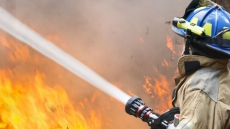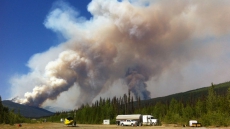The BC Coroners Service continues to work with the RCMP, New York Academy of the Arts and the Nova Scotia Medical Examiner on a unique project that combines art and science and solicits help from the public to identify decedents using reconstructed faces.
The BC Coroners Service provided the RCMP with skulls from 14 unidentified human remains investigations in B.C. dating back to 1972. The skulls were then recreated with 3D printing and transported to the New York Academy of the Arts. Facial reconstruction was done by students in New York with the hope that, with the public’s help, they will soon be able to put names to these faces.
“The 14 skulls provided by the BC Coroners Service as reference material are part of the B.C. inventory of cold cases,” said Eric Petit, director, Special Investigations Unit, BC Coroners Service. “Specifically, these are investigations where we have reached an impasse in terms of identifying the deceased individuals.”
In total, 15 skulls were provided for the project, including one from Nova Scotia. However, these victims could be from anywhere. Anyone who thinks they might recognize a face is asked to submit tips on the Canada’s Missing website.
“This partnership is a unique opportunity to try to draw new breath into otherwise stalled investigations,” Petit said. “Our hope is that these reconstructions will trigger a memory that results in someone connecting with us or the RCMP, which will lead us to identifying these individuals. This collaborative project builds on other identification tools, including our unidentified human remains viewer, to help us close cold cases in our province.”
Traditionally, when human remains are found, investigators use a variety of methods to identify the person. They may compare the remains to descriptions of reported missing persons. They can send samples for DNA testing or search dental records. Often, these methods yield results, but when they are unsuccessful, police, coroners and medical examiners might turn to more creative methods.
“This project was a true collaborative effort by many agencies within Canada, and we are grateful to the BC Coroners Service for their significant contribution,” said Marie-Claude Arsenault, RCMP chief superintendent and the officer in charge of the RCMP’s sensitive and specialized investigative services. “Every face tells a story, and these are 15 individuals who deserve to have their stories told. Any detail, no matter how small it may seem, could be the missing piece of the puzzle.”
Students at the academy’s forensic sculpture workshop reconstructed the faces under the guidance of Joe Mullins, a senior forensic artist with the National Center for Missing and Exploited Children in the U.S. The BC Coroners Service and the Nova Scotia Medical Examiner provided information such as sex, ethnicity and height for the unidentified human remains investigations. Armed with that knowledge, as well as their anatomical expertise and artistic skills, the students spent the week reconstructing the faces by applying clay to 3D-printed versions of actual skulls.
The reconstructed faces will go on display in New York in April 2020 as part of the New York Academy of Art’s Open Studios event.
Quick Facts:
The New York Academy of Art has hosted its forensic sculpture workshop annually since 2015.
Since 2015, four visual identifications have been directly attributed to facial reconstructions performed during the workshop.
In B.C., there are 179 unidentified human remains investigations open.
There are currently over 700 unidentified remains in the RCMP’s national database of missing persons and unidentified remains.



